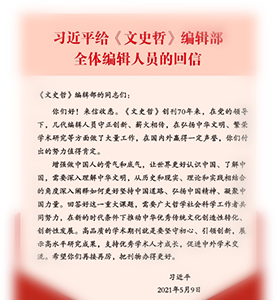明清学术转向不是传统所认为的从理学到考据学的“一步到位”,而是先由明代学术激变出“清初新理学”,再由之蜕变出清代理学、考据学、桐城派等清学各派的“二次转换”。以清初遗民集团为主体的清初理学家基于理学基本价值关怀,一反晚明从理学教条出发的治学思路,推崇以问题为导向,兼容并包,致力于中国17世纪危机的解决及理学基本价值与社会现实的再平衡,“清初新理学”应运而生。“清初新理学”是清初时代主题在学术上的反映,是明清学术转换的桥梁,是清初学术主流、清学各派的源头,对清初政治,特别是满人统治集团的汉化产生了巨大影响。基于时代主题及地域学术格局的变动,清初和晚清以来主流学界对清初新理学建构出两种图像,前者以孙奇逢、黄宗羲、李颙“三大儒”为领军,后者重视顾炎武、黄宗羲、王夫之“三大家”。
The New Neo Confucianism in the Early Qing Dynasty:
A Bridge over the Ming Qing Academic Transition and the Academic Mainstream of the Early Qing
Wang Jian
The academic transition between the Ming and Qing Dynasties was not one step from NeoConfucianism to textology as traditionally recognized, but first an upheavel from academics of Ming to the new NeoConfucianism in the early Qing, and then disintegrated into various genres such as NeoConfucianism of Qing, textology, and Tongcheng School. In the “troubled times” of early Qing, NeoConfucianists with the majority of adherents of the Ming Dynasty acted out of the academic approach of following the NewConfucian dogma in the late Ming period. They held problemorientated and allinclusive path, and devoted themselves to solving China’s crisis in the 17th century, as well as rebalancing the basic value of NeoConfucianism and social reality, thus formed the new NeoConfucianism in the early Qing. It was a reflex of the themes of that time on academic research, acted as a bridge over the MingQing academic transition and source of various academic schools of the Qing Dynasty, and affected greatly the politics in the early Qing, especially Chinesization of the Manchu ruling group. Based on the changes in the themes of the times and regional academic structure, leading scholars since then constructed two kinds of images of the new NeoConfucianism: one regards the “three great Confucianists” of Sun Qifeng, Huang Zongxi, and Li Yong as leading figures, while the other values the “three masters” of Gu Yanwu, Huang Zongxi, and Wang Fuzhi.


